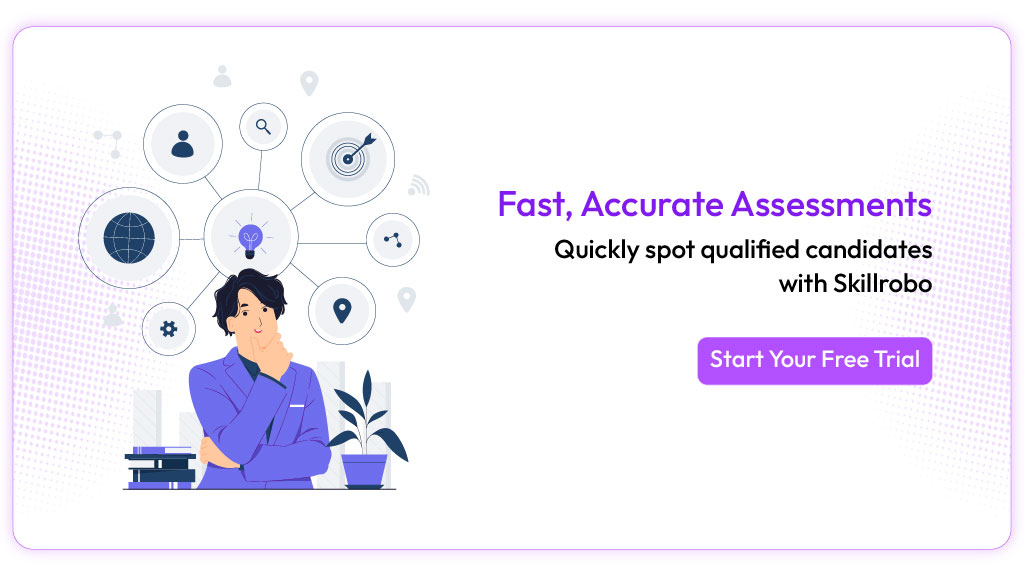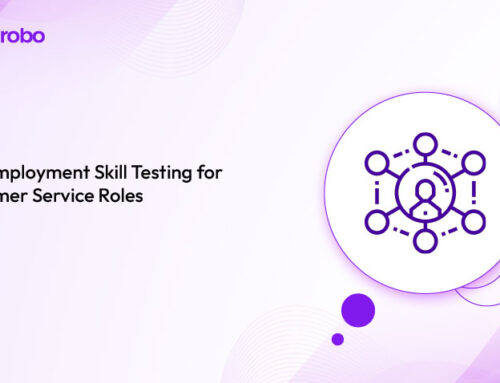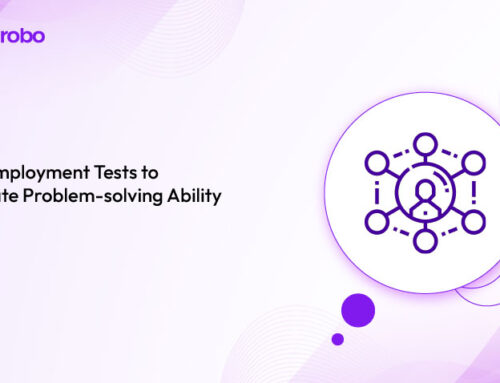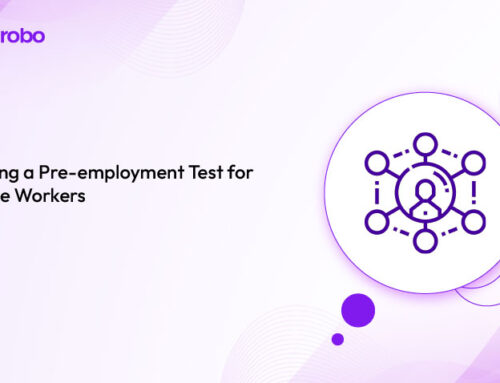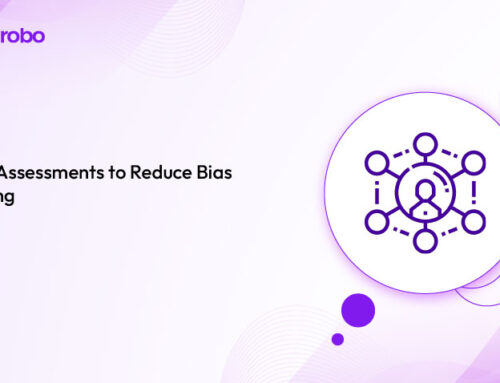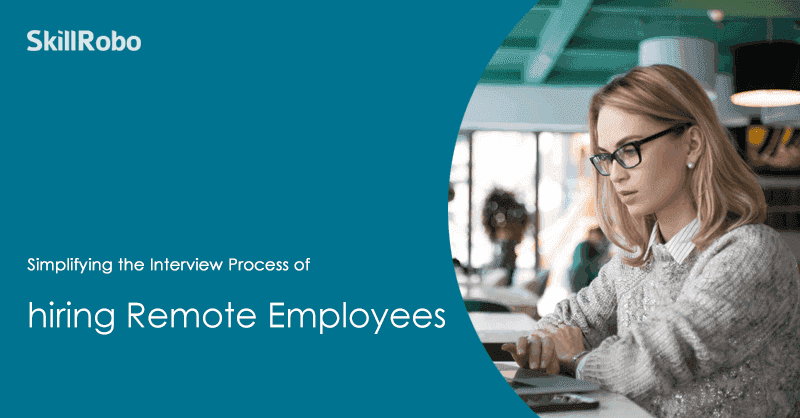
Key Takeaways
- Hiring remote employees demands structured recruitment processes and clear communication strategies.
- A strong remote hiring process includes skills testing, cultural fit assessments, and role-specific evaluations.
- Successful remote employee onboarding is critical to engagement and long-term retention.
- Platforms like Skillrobo help streamline remote hiring with customizable skills assessments and secure evaluations.
Why Remote Hiring Is the New Normal
The world of work has changed forever. According to a McKinsey report, 58% of Americans now have the opportunity to work remotely at least part-time. Companies that resist remote hiring limit their talent pool and competitiveness.
Hiring remote employees isn’t just about flexibility—it’s about accessing global talent, improving diversity, and cutting operational costs. But hiring remotely requires a different approach than traditional, in-office recruitment.
In this blog, we’ll explore how to hire remote employees effectively, the key skills to assess, best practices to follow, and tools that can make remote hiring seamless and successful.
Done right, remote hiring can boost productivity, innovation, and employee satisfaction. Done wrong, it can lead to communication breakdowns, culture clashes, and high turnover.
What is the Remote Hiring Process?
The remote hiring process refers to the end-to-end method of attracting, evaluating, and onboarding candidates without any in-person interaction. It leverages digital platforms and tools to conduct interviews, skills assessments, background checks, and new employee onboarding.
Unlike traditional hiring, where candidates meet recruiters or hiring managers face-to-face, every stage in remote hiring is handled virtually—from job posting to final offer acceptance. This process demands careful planning, clear communication, and the use of technology to ensure candidates experience a smooth, engaging, and transparent hiring journey.
It includes steps like:
- Online job postings and outreach
- Virtual interviews (Zoom, Google Meet)
- Skills assessment tests
- Reference checks
- Digital onboarding and training
Unlike traditional hiring, remote recruitment heavily emphasizes communication skills, self-discipline, tech-savviness, and cultural fit.
Why Hiring Remote Employees Is Different
Remote work brings new expectations and challenges for both employers and employees. Here’s why remote work recruitment strategies must evolve:
| Traditional Hiring | Remote Hiring |
|---|---|
| In-person interviews and interactions | Entirely digital process |
| Onboarding through office visits | Virtual onboarding tools and sessions |
| Monitoring through physical presence | Trust-based performance measurement |
| Office culture immersion | Intentional culture-building via digital platforms |
Key Challenges in Remote Hiring
While remote hiring opens new doors to global talent and flexibility, it also brings unique hurdles that employers must proactively address to succeed:
1. Evaluating Soft Skills
In a remote setting, it’s harder to gauge essential soft skills like communication style, emotional intelligence, collaboration, and adaptability. Without face-to-face interaction, subtle cues can be missed. Platforms like Skillrobo help bridge this gap by offering pre-employment assessments that measure both hard and soft skills objectively.
2. Time Zone Differences
Hiring globally often means managing candidates across multiple time zones, making scheduling interviews, meetings, and collaboration more complex. Without clear policies and flexible processes, time zone gaps can create delays, frustration, and miscommunication among team members.
3. Onboarding and Training
Remote employees can easily feel isolated or disconnected if onboarding isn’t structured and engaging. Poor virtual onboarding leads to slower ramp-up times, lower engagement, and higher early turnover. Successful remote hiring requires a strong digital onboarding process with mentorship, regular check-ins, and virtual team-building activities.
4. Security and Compliance
Hiring across borders brings challenges around managing employee data privacy, tax regulations, and labor law compliance. Organizations must stay informed about local laws and implement secure digital tools to protect sensitive information while ensuring compliance in each operating region.
By anticipating and addressing these challenges early, companies can unlock the full potential of remote hiring and create a more resilient, diverse workforce.
How to Hire Remote Employees Successfully
Mastering how to hire remote employees requires a structured, strategic approach. Follow these steps to ensure a smooth, effective hiring process:
Step 1: Define Clear Job Roles and Expectations
Start by crafting a detailed remote job description. Go beyond listing skills—clearly define deliverables, required tools, communication expectations, working hours, and preferred time zones. This ensures candidates understand exactly what remote work will look like in your organization and helps filter applicants who are truly a good fit.
Step 2: Use Skill Assessments Early
Don’t wait until the interview to evaluate your technical skills. Implement pre-employment assessments early in the process to objectively verify candidates’ abilities. Tools like Skillrobo help streamline this step by offering customizable tests for various roles, allowing you to shortlist candidates based on actual performance, not just resume claims.
Step 3: Assess Remote Readiness
Technical skills alone aren’t enough. Assess candidates’ readiness to work independently in a remote setting. Ask targeted questions about their prior remote work experiences, tech setup at home (e.g., internet speed, backup devices), self-management strategies, and ability to handle distractions. Candidates who have a dedicated workspace and experience managing their time remotely are more likely to succeed.
Step 4: Conduct Structured Video Interviews
Move beyond casual conversations. Use structured video interviews with standardized questions that focus on problem-solving, communication clarity, adaptability, and conflict resolution. Look for clear, concise responses, body language cues, and examples of proactive communication—all vital traits for remote success.
Step 5: Prioritize Soft Skills
Remote employees must be proactive communicators, self-starters, and efficient time managers. During interviews and assessments, carefully evaluate soft skills like emotional intelligence, collaboration, resilience, and adaptability. You can include behavioral assessments to measure these traits early and ensure the candidate can thrive without constant supervision.
Step 6: Plan Robust Remote Onboarding
Remote onboarding should be intentional and structured to avoid new hires feeling isolated. Design a detailed onboarding plan that includes virtual meet-and-greets with the team, tool and policy training sessions, goal-setting meetings, and regular check-ins. Using digital onboarding platforms, shared documentation, and buddy systems can make remote employees feel connected and supported from day one.
Remote Employee Onboarding: Why It’s Critical
First impressions matter—especially when employees don’t have the advantage of hallway conversations or casual office interactions. A strong remote onboarding program can make or break a new hire’s success and engagement.
A strong onboarding program helps:
- Build trust quickly – New hires feel more confident and valued when managers and teammates engage early and consistently.
- Familiarize employees with tools and processes – Remote workers must quickly learn how to navigate company software, communication platforms, and workflow systems without face-to-face help.
- Set clear performance expectations – Clear guidelines on goals, KPIs, and deadlines prevent confusion and ensure employees know how success will be measured.
- Foster early connections with teammates – Virtual coffee chats, buddy systems, and team intros help create a sense of belonging early in the journey.
- Increase retention and job satisfaction – Employees who feel supported from day one are more likely to stay, thrive, and advocate for your organization.
A study revealed that organizations with strong onboarding processes improve new hire retention by 82% and productivity by over 70%.
Best Practices for Remote Work Recruitment Strategies
Recruiting remote employees isn’t just about shifting in-person processes online. To attract, assess, and retain the best talent, you need a strategy built for a digital-first world.
1. Broaden Your Talent Pool
Think beyond your office location. By opening up roles globally or nationally, you can tap into a wider and more diverse talent base, increasing the odds of finding the right fit.
2. Use Targeted Job Boards
Post openings on platforms specialized in remote jobs. These platforms attract candidates who are already experienced in or seeking remote work opportunities.
3. Focus on Asynchronous Communication
Remote work relies heavily on emails, Slack messages, and project management tools. Candidates who can write clearly and concisely without constant clarification are invaluable in a distributed workforce.
4. Offer Competitive Benefits
Remote workers prioritize flexibility and support. Offer benefits like home office stipends, flexible work schedules, mental health resources, wellness programs, and stipends for internet/tech setup. These perks make you stand out in a competitive market.
5. Invest in Digital Culture
Replicate the social aspects of office life online. Set up virtual watercooler chats, and online games, celebrate employee birthdays or wins, and create regular virtual team-building activities.
A strong digital culture ensures remote workers feel connected, supported, and loyal to the company.
How Skillrobo Supports Remote Hiring
Hiring remote employees comes with its own set of challenges—verifying skills, assessing behavioral traits, and ensuring test integrity across different time zones and locations. Skillrobo is designed to help organizations overcome these challenges through a streamlined and reliable pre-employment assessment platform built for modern, distributed hiring.
- Pre-Built Assessments
Whether you’re hiring a remote digital marketer, sales executive, support specialist, or software engineer, Skillrobo offers a wide library of pre-configured assessments tailored to specific job roles. These tests are ready to deploy, saving valuable setup time for recruiters.
- Custom Test Creation
Have a unique job description? Skillrobo allows you to build fully customized assessments using your own questions or Skillrobo’s extensive question bank—ensuring that each test aligns with your role’s real-world responsibilities.
- Behavioral Testing
Remote success depends heavily on communication, time management, and collaboration. Skillrobo includes behavioral assessments that measure emotional intelligence, adaptability, and teamwork—giving recruiters insight into whether a candidate can truly thrive in a remote environment.
- Secure Test Environment
Prevent test manipulation and maintain hiring integrity with built-in anti-cheating tools. Features like timed assessments, randomized question sets, plagiarism detection, and webcam-enabled proctoring ensure a fair and honest evaluation—no matter where the candidate is located.
- Instant Analytics
Recruiters and hiring managers gain access to real-time, detailed candidate reports, including individual scores, benchmarks, and skill breakdowns. These analytics help make faster, more informed hiring decisions without needing to review every resume manually.
- Mobile-Friendly Access
Today’s candidates expect flexibility. Skillrobo is fully mobile-responsive, allowing applicants to complete assessments securely from any device, anywhere in the world—ideal for remote-first hiring strategies.
Skillrobo simplifies screening, improves decision-making, and ensures you hire the best remote employees with confidence.
Final Words: Build Better Remote Teams with Smarter Hiring
Remote work is here to stay—and so is the need for better hiring strategies. Companies that embrace structured remote hiring processes, skills testing, and intentional onboarding will outperform competitors stuck in outdated recruitment methods. With Skillrobo’s secure, customizable assessments, you can identify the best remote talent faster and set them up for success from day one.
Start your Skillrobo free trial today and transform how you hire remote employees.
FAQs
1. Why is remote hiring different from traditional hiring?
Remote hiring requires companies to assess not just technical skills but also self-management, communication, and adaptability. Unlike traditional hiring, remote hiring relies heavily on digital tools for assessment, interviews, onboarding, and culture-building, making structured evaluations critical.
2. How does Skillrobo ensure fairness in remote candidate assessments?
Skillrobo uses anti-cheating features like timed assessments, randomized questions, webcam proctoring, and plagiarism detection to ensure that all candidates are evaluated fairly and transparently, maintaining the integrity of the remote hiring process.
3. Can Skillrobo assess both technical and soft skills?
Yes, Skillrobo offers assessments that measure technical capabilities (like marketing, sales, customer service, and technical skills) as well as behavioral traits such as communication, adaptability, and collaboration, which are vital for remote work success.
4. Is Skillrobo suitable for hiring global remote teams?
Absolutely. Skillrobo’s mobile-friendly, cloud-based platform allows candidates to take assessments from anywhere in the world securely, making it ideal for organizations hiring across different time zones and geographies.
5. How quickly can recruiters get candidate results using Skillrobo?
Skillrobo provides real-time analytics and instant performance reports after candidates complete their tests. Recruiters can quickly view scores, skill breakdowns, and benchmark comparisons, enabling faster and more informed hiring decisions.

